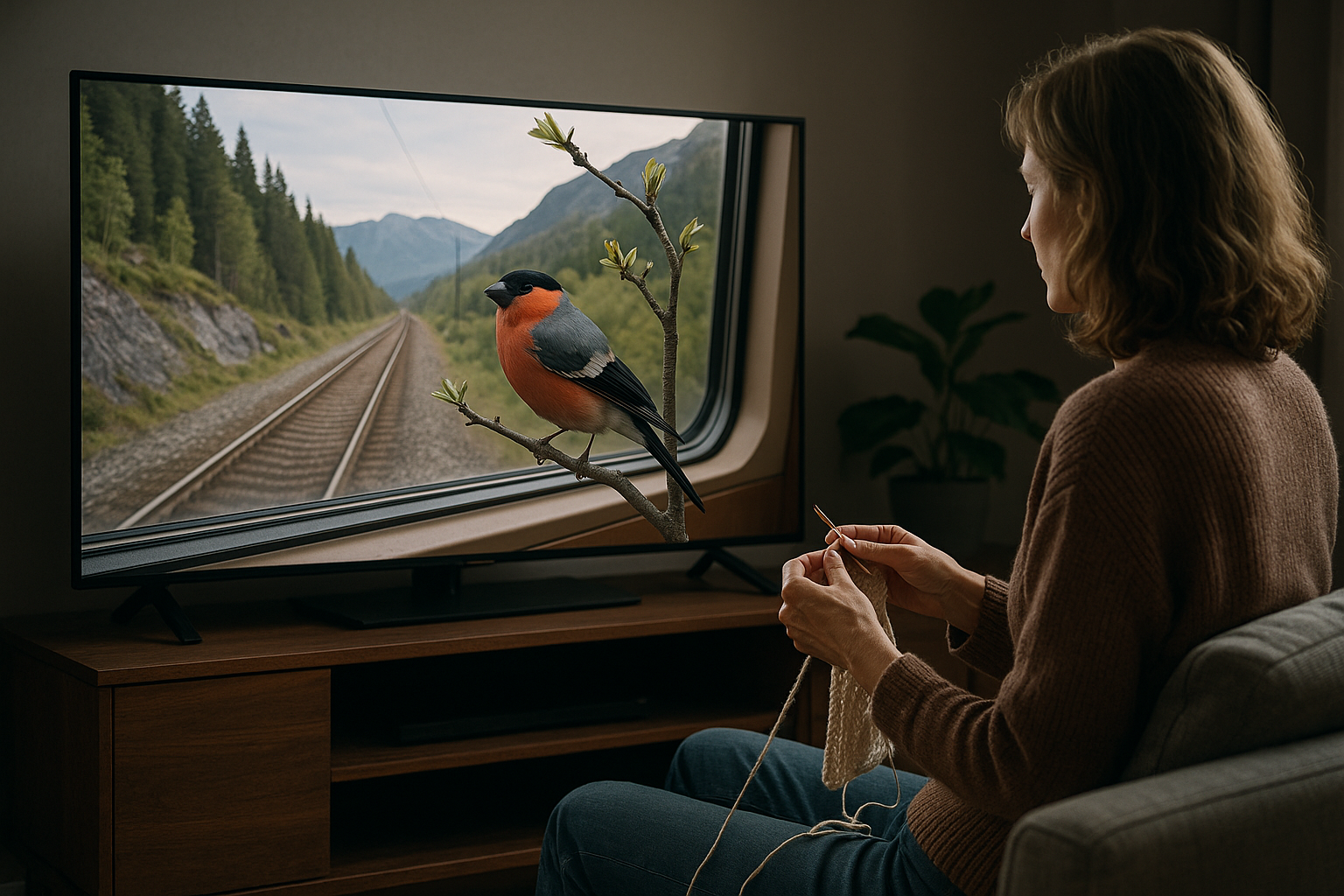Decoding the Phenomenon of Slow TV: A Sociocultural Perspective
In today's fast-paced world, a growing number of individuals are finding solace in a unique broadcasting trend known as Slow TV. This innovative concept, which focuses on long, real-time broadcasts of ordinary events, is gaining traction globally. Why are people entranced by hours of train journeys, knitting, or bird watching? Read below as we delve into the sociocultural underpinnings of this phenomenon.

An Unhurried Path: The Origins of Slow TV
Slow TV, a concept that emerged in Norway, is a broadcasting format that captures ordinary events in real-time. Unlike traditional television that relies on action-packed, fast-paced narratives, Slow TV focuses on mundane activities such as train journeys, bird watching, or even hours of uninterrupted knitting. The phenomenon started in 2009 when the Norwegian Broadcasting Corporation (NRK) aired a 7-hour train journey from Bergen to Oslo. The show was a surprising success, attracting millions of viewers.
A Cultural Shift Towards Mindfulness
The popularity of Slow TV signifies a broader cultural shift towards mindfulness and slow living. In a society marked by constant digital noise and distraction, Slow TV offers an escape into simplicity and tranquility. It encourages viewers to be present in the moment, to appreciate the mundane, and to embrace a slower pace of life. This reflects a growing societal trend where individuals are seeking strategies to counterbalance the pressures of modern living.
The Sociological Significance of Slow TV
From a sociological perspective, Slow TV can be seen as a response to the acceleration of modern life. It serves as a form of resistance against the culture of immediacy and constant connectivity facilitated by digital technology. By foregrounding the ordinary and the everyday, Slow TV challenges conventional notions of entertainment and productivity. It also taps into a collective yearning for authenticity and unmediated experiences in an increasingly virtual world.
How Slow TV is Shaping Modern Society
Slow TV is not just a broadcasting trend; it is influencing societal behaviors and values. It is promoting a culture of patience and attentive observation, qualities often overlooked in today’s fast-paced world. The popularity of Slow TV also signifies a growing demand for content that evokes a sense of calm and relaxation. As such, it is paving the way for more mindful and contemplative forms of entertainment.
Looking Forward: The Future of Slow TV
The rise of Slow TV reflects a societal shift towards more mindful and slow-paced living. As our world continues to accelerate, this trend is likely to grow, offering a counter-narrative to the fast-paced rhythms of modern life. By inviting viewers to find joy in the ordinary, Slow TV is not just transforming television; it is subtly reshaping our cultural values and our ways of being in the world.
Every cultural phenomenon offers a mirror to society, and Slow TV is no exception. It signifies a collective desire to slow down, to be present, and to find meaning in simplicity. As we continue to navigate the complexities of the 21st-century, it will be fascinating to see how this trend evolves and what it reveals about our changing society.




